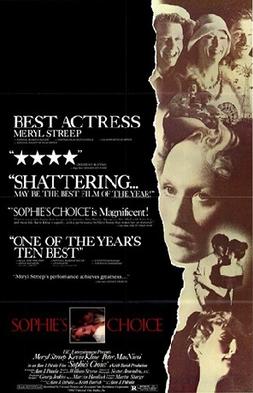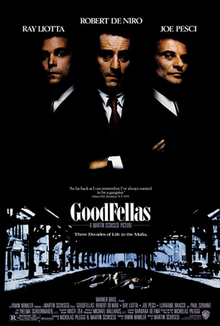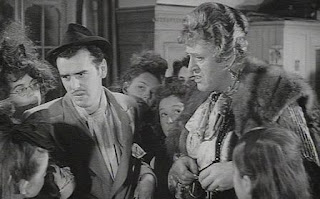Writer: William Styron, Alan J. Pakula
Composer: Marvin Hamlisch
AFI Rank: - (1998), 91 (2007)
BFI Rank: -




Sophie’s Choice was added to the AFI Top 100 in 2007 and after finally seeing it I can honestly say it’s absence from the original 1998 list was a injustice that has now been thankfully righted. As with many films I have watched so far from the AFI list, in both the viewing and the subsequent research I was a little embarrassed to admit I had never seen it. I was a fan of Pakula’s other films, especially All The President’s Men and The Pelican Brief, and had no idea he had not only directed Sophie’s Choice but adapted the screenplay also. Add to that the fact that it contains the strongest and earliest performances of three great actors, you cannot blame me for wondering why I hadn’t noticed the rock that I had obviously been living under for the last couple of decades.
If you have never seen the film, read William Styron’s book or heard about the choice that is at the center of the movie then stop reading and go watch it. Its as simple as that. If you need more convincing then read on.
There are many reasons that this film is on the AFI list, not least of which is the acting. Pakula understands his actors and he has directed eight of them in Oscar-nominated performances: Jane Fonda, Liza Minnelli, Jason Robards, Jane Alexander, Richard Farnsworth, Jill Clayburgh, Candice Bergen and Meryl Streep. Three of them, Fonda, Robards and Streep, took one home, Streep’s for this picture. Her performance is simply astounding. Kline, in his first film role, is simply brilliant and Cleese cast him in A Fish Called Wanda based on this performance. I also came away with a new found respect for MacNicol. I have always thought of him as an average actor but what he delivers here makes him great.
Sophie’s Choice may have gotten Streep her Oscar but there was no nomination for the picture itself. It did receive nominations but no wins for cinematography, costume, music and screenplay. In 1983 it was up against some stiff competition to be fair: Gandhi, ET, Tootsie, An Office and a Gentleman, Das Boot and The Verdict. Plus some other great films but not so much Oscar competition including Tron, Poltergeist and a little film called Blade Runner.
 |
| Kline, Streep and MacNicol |
I watched the US DVD release of Sophie’s Choice as right now there is little alternative. The quality was as you would expect for an early eighties film which has seen little to no remastering. The picture quality, mostly overly soft, varies throughout and a good remaster and blu ray release is definitely required for such a classic film.
Sophie’s Choice is hands down Crucial Cinema.
















